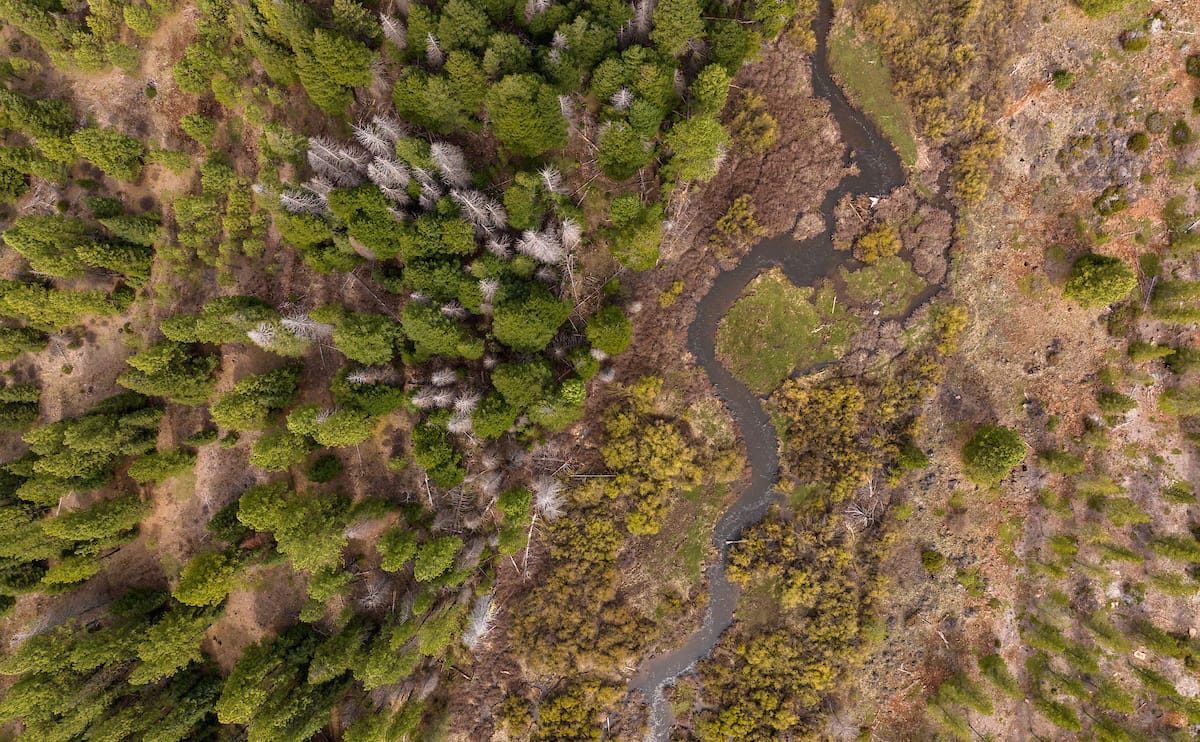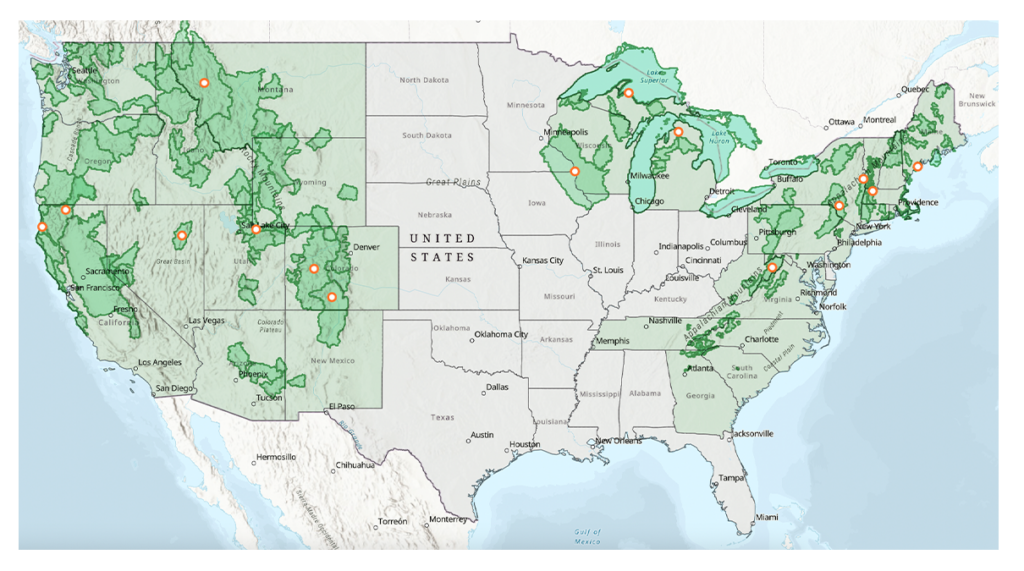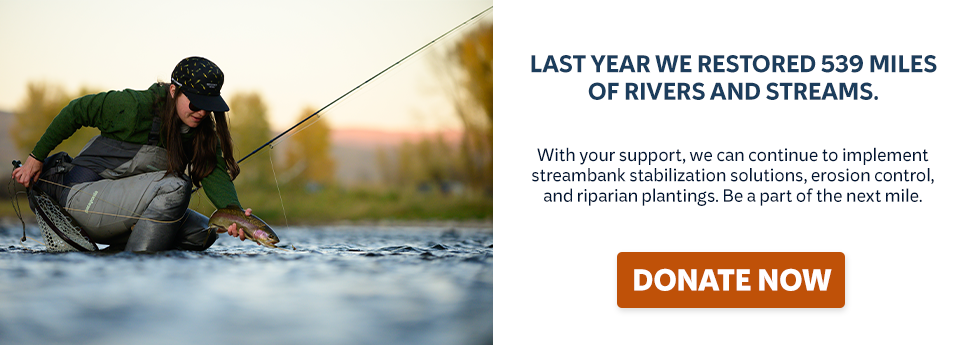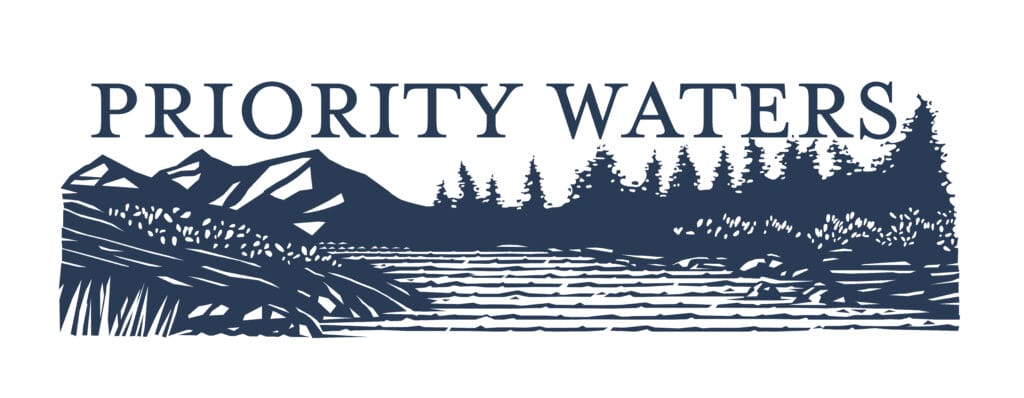
Nation’s largest coldwater conservation nonprofit identifies 200+ “Priority Waters” where work is needed to reverse declines of wild and native fish
Contacts:
- Chris Wood, President and CEO, Trout Unlimited, chris.wood@tu.org
- David Kinney, Vice President for Communications, Trout Unlimited, david.kinney@tu.org, 856-834-6591
ARLINGTON, Va.—Wild and native trout and salmon, as coldwater fish in a warming world, are facing enormous threats. More than 1.5 million miles of America’s trout and salmon waters are degraded, and populations of these iconic fish run a real risk of disappearing. Scientists say that of the United States’ 28 native trout species and subspecies, three are already extinct, while half of the rest occupy less than 25 percent of their historic range. Twenty-eight populations of Pacific salmon and steelhead are listed as threatened or endangered.
This is the context behind a new initiative from Trout Unlimited to protect and restore trout and salmon fisheries and the habitats upon which they depend in a national network of more than 200 Priority Waters across the country.
“Working with volunteer leaders, communities, natural resource agencies and other partners, Trout Unlimited is meeting the challenges facing trout and salmon in an era of climate change,” said Chris Wood, president and CEO of Trout Unlimited. “We are not only improving rivers and streams, but also creating healthy fisheries, promoting clean water, building climate resiliency, creating high-paying family-wage jobs, and leveraging public and private dollars to make an impact in our local communities.”
Trout Unlimited field teams, volunteers, and partners analyzed trout and salmon watersheds in 30 key states to assess where populations most need protection and restoration. To lay a scientific foundation, they examined existing wild and native fisheries data, and then, borrowing from the financial planner’s maxim that diversified investment portfolios reduce risk, they evaluated:
- the need to preserve strongholds with large, intact habitats and healthy trout or salmon populations;
- the ability of watersheds to harbor thriving fisheries as the climate changes;
- the importance of genetic diversity, life history diversity, and ecological diversity.
Factoring in climate resiliency models, the location of protected lands, and shared priorities of partner organizations, state and federal natural resource agencies, and communities that depend on coldwater rivers and streams, Trout Unlimited assembled a list of 200+ wild and native trout and salmon watersheds where the needs—and opportunities—are most pressing. The list of waters span from Alaska to Georgia and California to Maine.

In Vermont and New York, removing barriers and improving habitat can bring back the iconic Battenkill River.
In the Colorado River Basin, drought-resiliency projects can help native cutthroat populations recover and help communities shore up water supplies.
In Utah, reconnecting and restoring fragmented tributaries to the Great Salt Lake can make rivers, native fish populations, and communities more resilient to drought and climate change.
In California, where four major barriers are coming out in the largest dam removal project in history, habitat restoration on the Klamath River can help ensure successful recovery of salmon and steelhead runs following a century of absence.
Trout Unlimited is leveraging more than $100M in federal infrastructure investments to restore and reconnect coldwater rivers and streams across the nation.
Learn more about Trout Unlimited, see maps and state-by-state breakdowns of the 200+ Priority Waters, and read about trout and salmon recovery at http://prioritywaters.tu.org.
###
Trout Unlimited is the nation’s oldest and largest coldwater fisheries conservation organization dedicated to caring for and recovering America’s rivers and streams so our children can experience the joy of wild and native trout and salmon. Across the country, TU brings to bear local, regional and national grassroots organizing, durable partnerships, science-backed policy muscle, and legal firepower on behalf of trout and salmon fisheries, healthy waters and vibrant communities.


